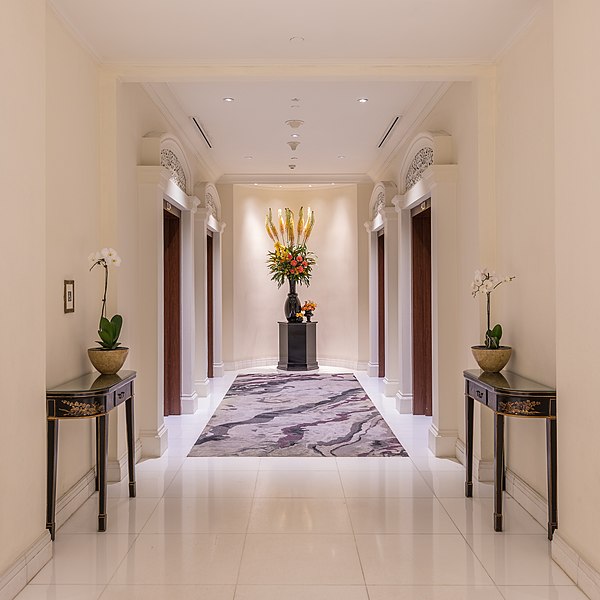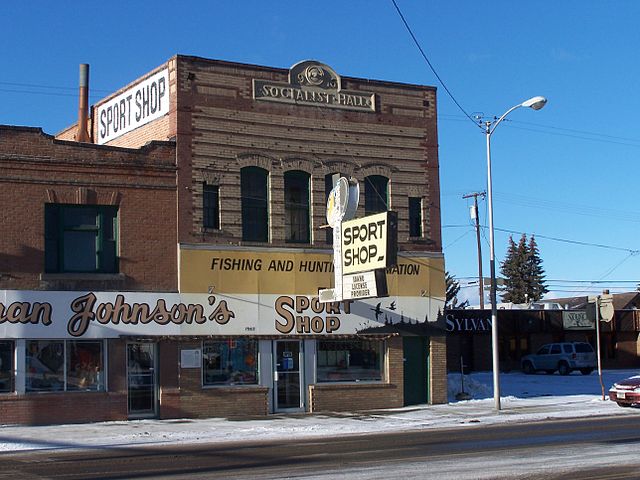A vestibule is a small room leading into a larger space such as a lobby, entrance hall, or passage, for the purpose of waiting, withholding the larger space from view, reducing heat loss, providing storage space for outdoor clothing, etc. The term applies to structures in both modern and classical architecture since ancient times.
Prothyron of Diocletian's Palace (Split, Croatia), leading to the Vestibule
North portico of the White House (Washington, D.C.). The vestibule is just inside the exterior doors.
Elevator vestibule at the InterContinental Hotel Singapore
In architecture, a hall is a relatively large space enclosed by a roof and walls. In the Iron Age and early Middle Ages in northern Europe, a mead hall was where a lord and his retainers ate and also slept. Later in the Middle Ages, the great hall was the largest room in castles and large houses, and where the servants usually slept. As more complex house plans developed, the hall remained a large room for dancing and large feasts, often still with servants sleeping there. It was usually immediately inside the main door. In modern British houses, an entrance hall next to the front door remains an indispensable feature, even if it is essentially merely a corridor.
Prayer hall of the Great Mosque of Kairouan, in Kairouan, Tunisia
Founders Hall at Haverford College in Pennsylvania
Socialist Hall, a former meeting hall in Butte, Montana
Firehall (London, Ontario) in 1923







